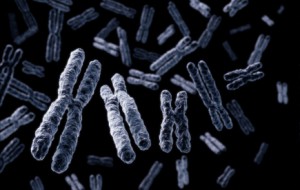Written by Dr Tomislav Horvat, University of Zagreb, Croatia
Recently, I was reading about the phenomenon of genetic mosaicism and its implications for the development of human diseases. Generation of genetically distinct cells from a single zygote is caused by de novo mutational events, including large chromosomal alterations (whole-chromosome aneuploidy, segmental aneuploidy). In addition, advances in sequencing-based approaches demonstrated how mosaicism could as well arise following subtler rearrangements and substitutions at the level of a single nucleotide (Lupski 2013). By altering the cell’s transcriptional programme, these genetic aberrations can predispose cancer development, but are also found in numerous non-cancer diseases, notably dermatological diseases, where mosaicism is directly reflected in the patients’ phenotypic variation (Biesecker and Spinner 2013). However, one should not forget the existence of epigenetic modifications that superimpose the information written in our genes and thus modulate how this information is read. And these modifications come in numerous flavours, known for a long time to differentiate different cell types in an organism. Therefore, I believe the only true insight into phenotypic and physiological consequences of mosaicims requires studying both aspects simultaneously.

One wonders, how (if at all) does an “altered” cell deal with a chromosomal rearrangement? Can it recruit epigenetic means to somehow put the genetic alteration under control or attenuate its impact and arousal of unscheduled changes leading to disease? I was happy to come across a study where the authors show how trisomy 8-positive fibroblasts display a characteristic expression and methylation phenotype distinct from disomic fibroblasts from the same patient (Davidsson 2013). But, regardless of the reported massive changes, increased DNA hypomethylation of gene-poor regions on the gained chromosome – potentially as part of the heterochromatinization process reminiscent of inactivated X-chromosome in females – might argue in favor of a defense mechanism activated to restrain the unfavorable state. So, it made me wonder whether using drugs that target epigenetic modifications (histone deacetylase and DNA methylation inhibitors) or modern gene manipulation tools targeting a specific gene, region and even potentially a nucleotide (e.g. TALENs) could aid preventing the negative impacts of genetic rearrangements. Of course, the drug specificity and the magnitude of a chromosomal rearrangement still seem to be the limiting factors. Targeting only the affected cells poses an additional layer of complexity.
But, there is one other mosaicism-related issue that preoccupies my mind. Is there such a phenomenon as “epigenetic mosaicism”? Interestingly, searching Google does not take me far… This type of mosaicism would constitute an imaginary scenario wherein two genetically identical cells of the same cell type have different expression profiles, solely due to different epigenetic profiles. We know epigenetic alterations are equally important in cancer development, but can they be a sole driver of phenotypic variability in between cells of the same type, leading to mosaicism or disease/cancer? Or, rather, are genetic changes the ones that preferentially mess things up, followed further by epigenetic alterations that help to maintain and/or propagate an unfavourable condition?
When observing various tissue sections under the microscope, cells of the same type can assume various positions in regard to the blood supply and local microenvironment (other cell types). Therefore, it seems legitimate to think they might be physiologically “slightly” different, with “slightly” different expression profiles defined by “slightly” different epigenetic patterns. Would this constitute mosaicism as well – phenotypically harder to observe and with no, or, in the worst case scenario, less pronounced consequences on human health? More importantly, do we need to redefine the number of cell types that inhabit our body, taking into account epigenetic profiles that even in morphologically and physiologically identical cells might differ? What benefits would this new “cell systematics” bring, understanding that what was until recently considered a homogenous cell population, would suddenly become a highly diverse population of cells. Do we even have technical and methodological means to study this properly?
Still, none of this should be taken too seriously… these are just thoughts of an ordinary postdoc who still has a lot to learn…
References:
Lupski, J.R. (2013). Genome mosaicism–one human, multiple genomes. Science 341, 358-359.
Biesecker, L.G., Spinner, N.B. (2013). A genomic view of mosaicism and human disease. Nature Reviews Genetics. 14, 307-320.
Davidsson, J., Veerla, S., Johansson, B. (2013). Constitutional trisomy 8 mosaicism as a model for epigenetic studies of aneuploidy. Epigenetics Chromatin. 6: 18.
Comments